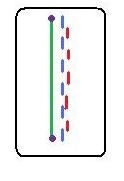crazy_dan said:
I keep a few nickel rods around for just such instances, I have had pretty good luck getting a good fire IE in a pile on the ground or in a shallow pit with charcoal going heating the piece up with the charcoal fire, till it is HOT welding it with nickel rod and then putting it back in to the fire and walking away till the fire is out cold and I can remove it by hand, but I have a little more experience than most of the backyard welders I have met.
Mild steel rod or mig wire will not work on cast Iron
Dan, that is about ninety percent of what is needed for cast iron to be welded safely.
A couple other pointers for the DIY person, do not weave, short straight stringer beads work best, 1/2" long. Peen the weld lightly after each pass.
Take your time, don't let the workpeice get too hot.
Don't stand around either, don't want to lose your pre heat.
Always drill a small hole at each end of the crack.
Some peices are just too burnt to be saved (such things as coal grates, and inner baffle plates)
If you didn't use a fire to preheat (torch or forge for example) bury the part in wood ashes, lime or dry sand after welding (fiberglass insulation will work, but it will burn and smell very bad). The goal is to slow the cooling rate.
Brazing (technicaly it is bronze welding) is not to be used for things which will aproach or possibly surpass the melting temp of bronze in use. Actualy about 800F is max.
If you have a way to check the temp, 900 degrees F is good for preheat. If not, "black heat" is o.k.


